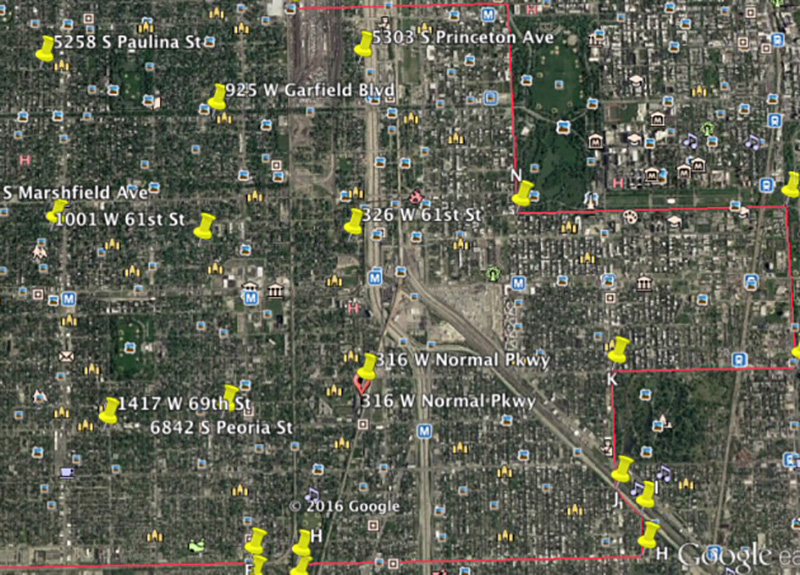Allison Rose Grenen (WCAS ’17) received a Northwestern Undergraduate Research Grant (URG) to study the ecological impact of Chicago’s Large Lots program. Through its partnership with URG, ISEN recognized Grenen’s exemplary work in the field of sustainability and the proposal was awarded as part of the Nasaw Program.
When the City of Chicago launched a program to sell vacant lots to residents, blocks clubs, and nonprofits on Chicago’s South and West sides in 2014 for just $1, no one quite knew what to expect. And to Allison Rose Grenen, a Northwestern senior and environmental science major, that uncertainty made using her expertise to study the lots all the more exciting.
During the summer of 2016, Grenen conducted in-person surveys of nine vacant lots in Chicago’s Greater Englewood neighborhood where she analyzed various factors of lawn maintenance, including turf, shrubbery, and fencing. Her research findings help define the current ecological impacts of vacant lots and track change over time. Even she admits that her results surprised her.
“I expected the lots to get more care, but I didn’t think there would be so much change in just a couple of years,” said Grenen.
Grenen’s first interaction with the Large Lots program came in 2015 through an internship at the U.S. Forest Service, where she was asked to begin surveying the sold lots using images on Google and Bing Earth, analyzing change from from the previous year.
“The maps were a good starting point, but became outdated very quickly, and there wasn’t much research assessing change on the lots. I thought a physical assessment of the lots would paint a more detailed picture and help measure progress for the program,” she said.
To start the in-person assessment, Grenen applied for funding through Northwestern’s Undergraduate Research Grants (URGs), a program that provides stipends to students conducting independent research work for eight weeks during the summer.
Once she identified which nine lots would be representative and easily accessible, Grenen traveled to each to conduct a transect survey, laying down meter tape and walking the width and length of each lot to take photographs. She then assessed each lot for presence of two ecologically significant plants – white clover (trifolium repens) and plantain (plantago major).
“You’ll only find these plants on healthy lawns that have been recently mowed. White clover won’t tolerate drought or soils that are too alkaline or acidic and plantains are short plants, so you wouldn’t be able to see them on an overgrown, high lawn. They’re also a good grazing plant for small insects and animals,” Grenen said.
Of the nine lots she surveyed, 17 percent of meter transects had white clover coverage and 54 percent had plantain coverage.
“I’m optimistic about these findings. I've been working on the project for a long time, and to see this kind of change is really encouraging” she said.
Grenen plans to continue surveying lots in Greater Englewood and adding to her Forest Service team’s data on the Large Lots program. Similar research of such programs in other areas of the country has shown that maintained lots have lead to improvements in public health, increased safety, and greater community interest in neighborhoods.
“The overall goal is to measure the impact this project is having in communities. Already there have been 276 lots sold in Englewood. The city plans to sell more this fall,” said Grenen.
The Large Lots program currently operated in four other Chicago neighborhoods: Auburn Gresham, Austin, East Garfield Park, and Roseland and Pullman.



